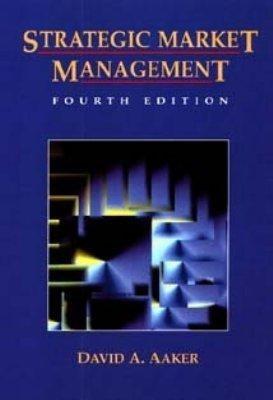Question
Q 18-6: Weisman, Inc. uses activity-based costing as the basis for information to set prices for its six lines of seasonal coats. Compute the activity-based
Q 18-6: Weisman, Inc. uses activity-based costing as the basis for information to set prices for its six lines of seasonal coats. Compute the activity-based overhead rates using the following budgeted data for each of the activity cost pools.
| Activity Cost Pools | Estimated Overhead | Expected Use of Cost Drivers Per Activity |
| Designing | $450000 | 10000 design hours |
| Sizing and Cutting | $4000000 | 160000 machine hours |
| Stitching and Trimming | $1440000 | 80000 labor hours |
| Wrapping and Packing | $336000 | 32000 finished units |
Q 18-12: Spin Cycle Architecture uses three activity pools to apply overhead to its projects. Each activity has a cost driver used to allocate the overhead costs to the projects. The activities and related overhead costs are as follows: initial concept formation $40,000, design $300,000, and construction oversight $100,000. The cost drivers and expected use are as follows.
| Activities | Cost Drivers | Expected Use of Cost Drivers Per Activity |
| Initial Concept Information | Number of Project Changes | 20 |
| Design | Square Feet | 150000 |
| Construction Oversight | Number of Months | 100 |
(a) Compute the predetermined overhead rate for each activity.
(b) Classify each of these activities as unit-level, batch-level, product-level, or facility-level.
DI 18-2: Flynn Industries has three activity cost pools and two products. It expects to produce 3,000 units of Product BC113 and 1,500 of Product AD908. Having identified its activity cost pools and the cost drivers for each pool, Flynn accumulated the following data relative to those activity cost pools and cost drivers.
Annual Overhead Data
| Activity Cost Pools | Cost Drivers | Estimated Overhead |
| Machine Setup | Setups | $16000 |
| Machineing | Machine Hours | 110000 |
| Packaging | Orders | 30000 |
Expected Use of Cost Drivers per Unit
| Expected Use of Cost Drivers per Activity | Product BC113 | Product AD908 |
| 40 | 25 | 15 |
| 5000 | 1000 | 4000 |
| 500 | 150 | 350 |
Using the above data, do the following:
(a)Prepare a schedule showing the computation of the activity-based overhead rate per cost driver.
(b) Prepare a schedule assigning each activity's overhead cost to the two products.
(c) Compute the overhead cost per unit for each product. (Round to nearest cent.)
(d) Comment on the comparative overhead cost per product.
E18-1: Saddle Inc. has two types of handbags: standard and custom. The controller has decided to use a plantwide overhead rate based on direct labor costs. The president has heard of activity-based costing and wants to see how the results would differ if this system were used. Two activity cost pools were developed: machining and machine setup. Presented below is information related to the company's operations.
| Standard | Custom | |
| Direct Labor Costs | $50000 | $100000 |
| Machine Hours | 1000 | 100 |
| Setup Hours | 100 | 400 |
Total estimated overhead costs are $240,000. Overhead cost allocated to the machining activity cost pool is $140,000, and $100,000 is allocated to the machine setup activity cost pool.
Instructions
(a) Compute the overhead rate using the traditional (plantwide) approach.
(b) Compute the overhead rates using the activity-based costing approach.
(c) Determine the difference in allocation between the two approaches.
Step by Step Solution
There are 3 Steps involved in it
Step: 1

Get Instant Access to Expert-Tailored Solutions
See step-by-step solutions with expert insights and AI powered tools for academic success
Step: 2

Step: 3

Ace Your Homework with AI
Get the answers you need in no time with our AI-driven, step-by-step assistance
Get Started


